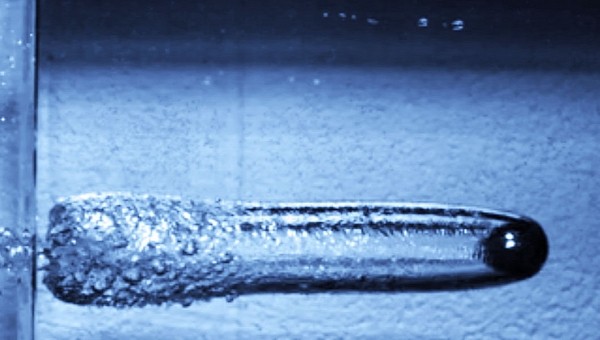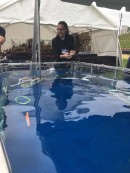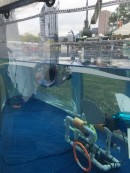While commercial aviation is still waiting for its great supersonic breakthrough that seems to encounter never-ending bumps in the road, military applications from aircraft to missiles and anti-missile systems are way ahead on the hypersonic route. New research that will kick off soon is trying to achieve something that’s never been possible until now, and both the Navy and Air Force are on it.
The benefits of hypersonic speed for military applications can’t be separated from the inherent risks. Hypersonic weapons (defined as weapons that can travel at five times the speed of sound, equal to more than Mach 5/4,000 mph) can cause underwater explosions with serious consequences when they hit ships, can get seriously damaged themselves even by natural factors (such as seemingly-harmless rain drops) or can become the enemy (which is why all-new anti-missile systems also need to be developed).
Any type of solution or preventive measure for these potential risks begins with research. When it comes to the specific impact of hypersonic missiles underwater, research seems to have been scarce until now. Bryan Schmidt, assistant professor of mechanical and aerospace engineering at the Case Western University in Cleveland, Ohio, wants to change that.
He's preparing to start a series of experiments that will be drastically better than anything done so far on this subject, especially compared to the military research on the impact of underwater explosions on ships and submarines, carried out way back in the 1940s.
What makes this research groundbreaking is speed – both of the ballistics used in the experiment, and of the state-of-the-art camera that will capture it on video.
The experiment itself will take place in a water tank that’s only 8 ft (2.4 meters) deep. This is where an 18mm (0.7 inch) projectile, propelled from something described as a “two-stage light gas gun” will basically hit the water at an incredible 9,000 mph (14,484 kph). Thanks to a high-performance camera that can capture up to 200 million frames per second, the scientists will be able to actually “see” how this occurs and what impact it has.
Because the speed of sound is different in water than in air, this experiment is supersonic relative to the speed of sound in water, but hypersonic if the speed of sound in air is used as the reference point.
It’s due to take place next year, and researchers from the U.S. Naval Surface Warfare Center, Carderock Division, in Maryland, are also supporting it with separate computer simulations.
Grants adding up to $1 million, from both the Office of Naval Research, and the Air Force Office of Scientific Research, have been awarded for this unprecedented experiment. If things go well, it will allow scientists to watch and study something that’s never been accessible before. This is why researchers can only theorize about the potential outcomes of the actual underwater impact, with fascinating hypotheses.
The data from this groundbreaking research will then be used to better understand the potential risks associated with hypersonic speed, and to predict them with greater precision.
Any type of solution or preventive measure for these potential risks begins with research. When it comes to the specific impact of hypersonic missiles underwater, research seems to have been scarce until now. Bryan Schmidt, assistant professor of mechanical and aerospace engineering at the Case Western University in Cleveland, Ohio, wants to change that.
He's preparing to start a series of experiments that will be drastically better than anything done so far on this subject, especially compared to the military research on the impact of underwater explosions on ships and submarines, carried out way back in the 1940s.
What makes this research groundbreaking is speed – both of the ballistics used in the experiment, and of the state-of-the-art camera that will capture it on video.
The experiment itself will take place in a water tank that’s only 8 ft (2.4 meters) deep. This is where an 18mm (0.7 inch) projectile, propelled from something described as a “two-stage light gas gun” will basically hit the water at an incredible 9,000 mph (14,484 kph). Thanks to a high-performance camera that can capture up to 200 million frames per second, the scientists will be able to actually “see” how this occurs and what impact it has.
Because the speed of sound is different in water than in air, this experiment is supersonic relative to the speed of sound in water, but hypersonic if the speed of sound in air is used as the reference point.
It’s due to take place next year, and researchers from the U.S. Naval Surface Warfare Center, Carderock Division, in Maryland, are also supporting it with separate computer simulations.
Grants adding up to $1 million, from both the Office of Naval Research, and the Air Force Office of Scientific Research, have been awarded for this unprecedented experiment. If things go well, it will allow scientists to watch and study something that’s never been accessible before. This is why researchers can only theorize about the potential outcomes of the actual underwater impact, with fascinating hypotheses.
The data from this groundbreaking research will then be used to better understand the potential risks associated with hypersonic speed, and to predict them with greater precision.







